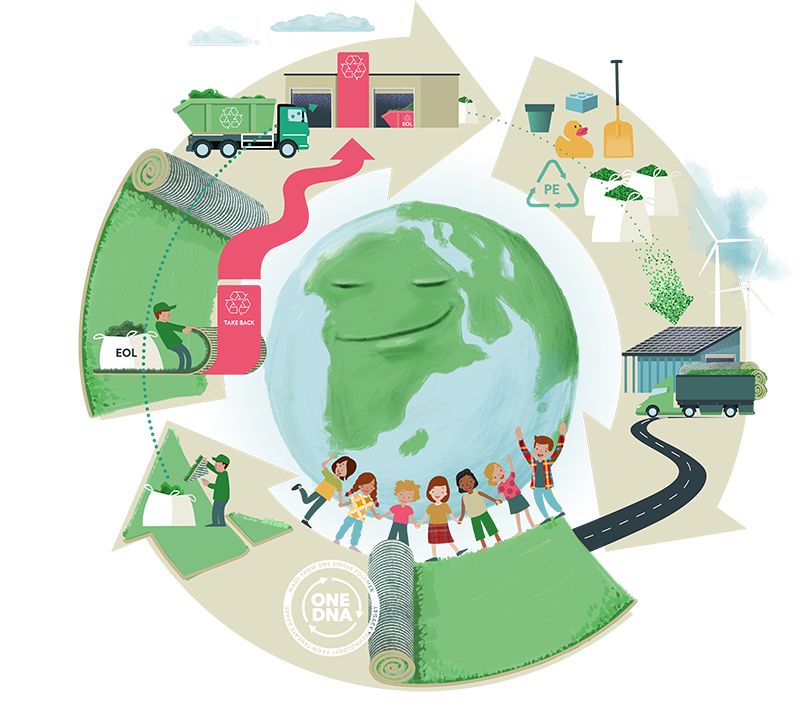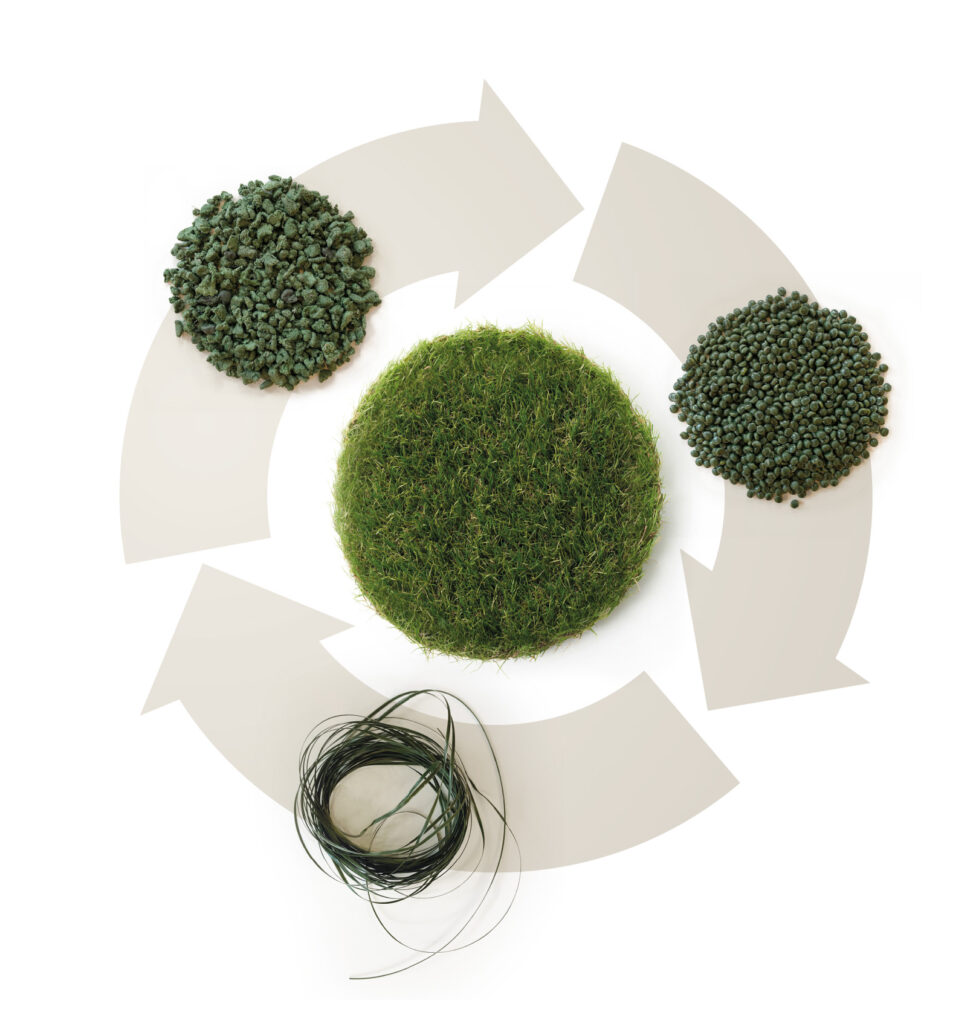Sustainable
Sustainable artificial grass refers to products designed and manufactured with a strong emphasis on environmental friendliness and durability. This means that throughout the production, usage, and eventual disposal of the artificial grass, consideration is given to its impact on the environment.
Sustainable artificial grass provides a solution in areas where natural grass struggles to thrive and as an alternative to paving. Despite being made of plastic, sustainable artificial grass also offers advantages over natural grass. Traditional grass requires significant amounts of water, regular application of pesticides and fertilizers, and intensive maintenance. Artificial grass eliminates these needs, creating a more environmentally friendly alternative than many people realize.


Choosing Sustainable Artificial Grass
The artificial grass industry is focusing on innovation and circularity. LimeGreen® takes the lead in this with ONE-DNA™ artificial grass, produced from a single material, polyethylene (PE). This pioneering design enables complete recycling without the need for material separation, allowing the artificial grass to be reused directly for new applications at the end of its lifespan. Thus, ONE-DNA™, or monomaterial artificial grass, seamlessly aligns with the principles of the circular economy.
Differences
in Artificial Grass
When choosing artificial grass, it’s important to consider lifespan, environmental friendliness, and costs to make the most sustainable choice for your needs. Below is an overview of types of artificial grass in order from most sustainable to least sustainable.
- Advantages: Innovative design with a single base material (PE) is lightweight, and the entire mat is highly permeable.
- Sustainability: The monomaterial structure, as seen in the packaging industry, enables complete recycling. It significantly contributes to the circular economy and reduces environmental impact.
- Advantages: PP (polypropylene) is lightweight and easier to handle, representing a significant advancement over Latex and PU coatings.
- Sustainability: The recycling process is more complex due to the impossibility of material separation. Additionally, the recycled material, due to the mixture of PE and PP, lacks the purity of the original. Recycling leads to downcycling.
- Advantages: Provides strong adhesion and is more durable than latex, contributing to longer product life.
- Sustainability: The recycling process is more complex as it is not possible to separate the materials. Additionally, the recycled material, due to the mixture of PE PP and PU, lacks the purity of the original. Recycling leads to downcycling.
- Benefits: Provides excellent stability and strength to the grass mat.
- Sustainability: The recycling process is more complex due to the inability to separate materials. Additionally, the recycled material, due to the mixture of PE and PP and Latex, lacks the purity of the original. Recycling leads to downcycling.

Sustainable choices
Sustainable artificial grass offers an attractive solution as an alternative to paving and in places where natural grass would not stand a chance. With benefits such as reduced water consumption, no need for harmful chemicals and the potential for recycling, circular artificial turf represents a step towards a more sustainable future. The ONE-DNA™ concept demonstrates a commitment to sustainability and innovation and provides a blueprint for the future of the synthetic turf industry.











